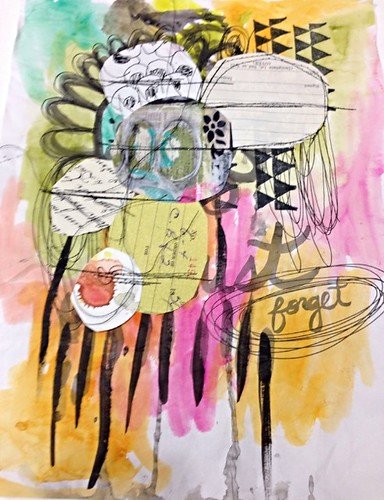Robert Motherwell was born in Aberdeen, Washington on the 24th of January, 1915. In 1932, he briefly studied painting in San Francisco at the California School of Fine Arts. While pursuing a Bachelor’s in Philosophy at the Stanford University, Motherwell was exposed to the poems of Stephen Mallarmé. Mallarmés theories about the significance of the emotional factor in art had a great impact on Motherwell and influenced his later works. He graduated from the Stanford University in 1937. After just a year of studying for his PhD in Philosophy at the Harvard University, he shifted towards the study of art under art historian – Meyer Schapiro.
It was while he was on a trip in Europe in 1938 that Motherwell began to be taken seriously as an artist. The Raymond Duncan Gallery in Paris was the location for his first ever solo exhibition. In 1941 Motherwell arrived in Greenwich Village with the intention of devoting all his time to painting. His period of stay in Greenwich brought him into contact with abstract artists Jackson Pollock and William Baziotes. Motherwell joined the Abstract Expressionist School and became its youngest member. His abstract art output included experiments in not just painting but also in collages. Motherwell had the good fortune of being invited to display his art works at the ‘Art of This Century Gallery’, a gallery in New York City opened by the American art collector – Peggy Guggenheim.
In 1946 Robert Motherwell participated in an American show at New York’s Museum of Modern Art. The period of his life from 1946 to 1978 included more exhibitions of his abstract art paintings in the United States, Paris and London. He became well-known for using black paint and his method of mixing turpentine with his paint, which diluted the paint resulting in a shadow effect.
In 1949, Motherwell created an abstraction entitled ‘At Five in the Afternoon’. This abstract art work consisted of a white background with solid black ovals and black vertical bands. This was the first translation to canvas of Motherwell’s motifs in his famous ‘Elegy to the Spanish Republic’ Series. The main theme of the series which included a total of 140 paintings was the Spanish Civil War.
Despite the arrival of the Pop Art movement in the 1950’s and the gradual weakening of the Abstract Expressionism Movement, Motherwell continued to create highly experimental abstract art achieving great emotional depth. Out of all the original members of the New York School, he was to only one to embrace printmaking with open, enthusiastic hands.
Motherwell continued his “Elegy to the Spanish Republic” Series until his death at the age of 76, on July 16th 1991. With his passing, the abstract art community lost one of its most prominent representatives.



